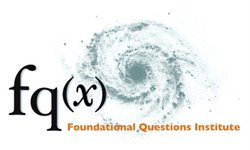Workshop for Science Writers: Quantum Theory
122:026
Nordita, Stockholm
Venue

Nordita, Stockholm, Sweden
Scope
Quantum physics is a notoriously challenging subject even for the experts. The goal of this workshop is to give science writers the opportunity to take a step back and gain a broader perspective on this field. At the same time, we want to give researchers in the field the possibility to interact with science writers and share experiences about the pitfalls of science communication.
Some of the topics that will be covered at this workshop are: Quantum computing, quantum optics and novel tests of the foundations of quantum mechanics, topologial insulators, tests of emergent quantum mechanics, analog gravity, the gauge-gravity duality and its applications in condensed-matter physics, and searching for new physics in atomic, molecular and optical physics.
A detailed program will follow.
We gratefully acknowledge support from the Fetzer Franklin Fund and the Foundational Questions Institute.
[Timetable - available from start of the program]
Format
We will have lectures of 2 x 45 minutes with a break in the middle and ample time for discussion. On Thursday afternoon, we will visit the quantum optics lab at AlbaNova.
Lecturers
|
Application
If you want to apply for participation in the workshop, please fill in the application form. You will be informed by the organizers shortly after the application deadline whether your application has been approved. Due to space restrictions, the total number of participants is strictly limited. (Invited speakers are automatically approved but need to register anyway.)
Application deadline: 14 July 2014
There is no registration fee.
Travel Reimbursement
You are eligible for travel reimbursement if and only if you have written confirmation from one of the workshop organizers.
Accommodation
If you need help finding accommodation or have questions regarding your booking, please contact Elizabeth Yang at eyang@kth.se



